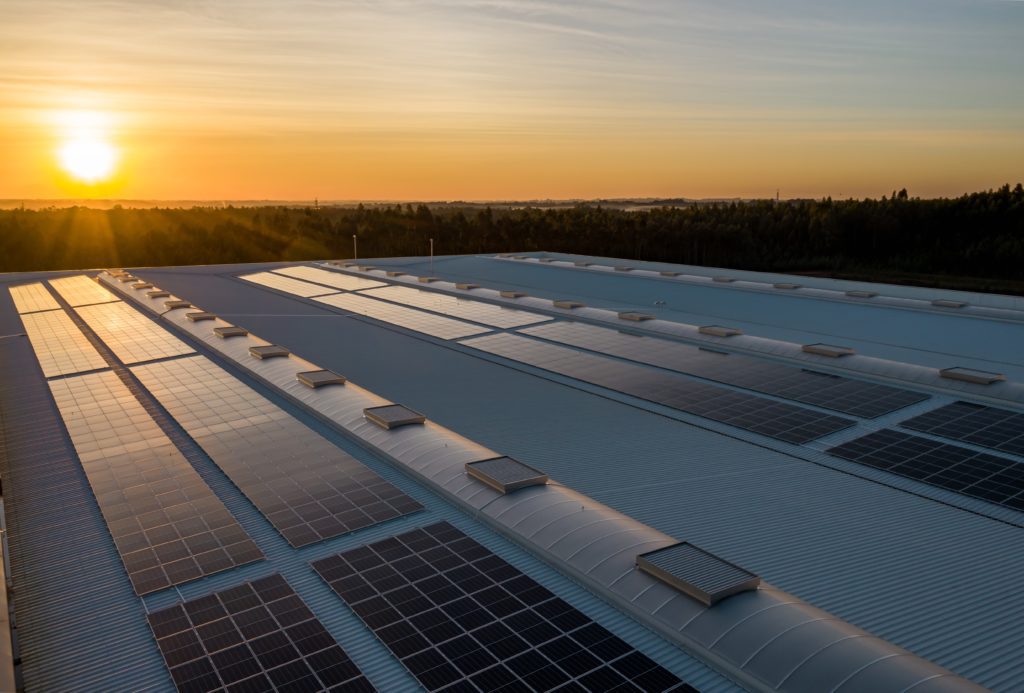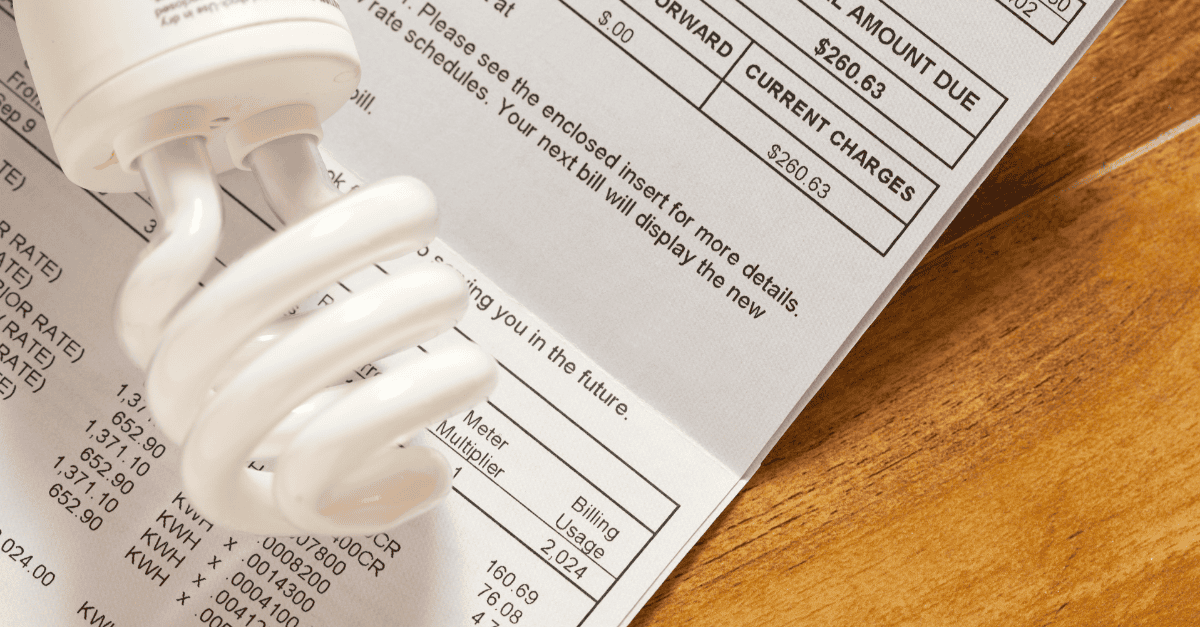What opportunities are hidden in green energy and how you can grasp them
2 August 2022
The topic of green energy sets off a chain reaction of questions. Is it more expensive than “regular” energy? Why would I switch if everything works fine as it is now? How to avoid greenwashing? Will it really help the environment? Let’s be honest, there are no easy answers to these questions, and to every positive opinion about green energy you can find a negative, opposing one, if that’s the goal. In this article, we want to clear up the confusion around the topic and set up a solid foundation for you to make a decision about green energy for your business.
In this article, you’ll find out:
- What sustainability, ESG, and green energy are about.
- Where energy exists in the ESG framework.
- Quick overview of emission scopes from the energy standpoint.
- How to take actions that’ll bring results.
Breaking down the complexity
Picture this: you’re six, and the familiar world of trucks and dinosaurs, puzzles and dolls is changing and growing – you’re entering the brave new world of elementary school. You’re doing your best to learn how to read, but your teacher only gives you Hamlet and microwave manuals. Are you excited to learn and rush home to practice more, or do you get so frustrated and overwhelmed that it’s easier to give up on the whole idea of reading if not studying in general?
When we have to deal with something too complex that seems way beyond our reach, we strive to go back to whatever’s more familiar–those puzzles and trucks–and forget that big black cloud of the hard-to-grasp concept. Hopefully, the leading hand of a good parent or an older friend can guide us from the fog. Let us try to become this friend for you and break down the complexity of ESG metrics, sustainable energy, and the opportunities for your business.
What makes ESG, green energy, and sustainability hard to take action on?
In a world where the biggest players have committed to going net–zero by 2050, it would be reasonable to ensure that all companies have equal access to necessary tools, information, and support. However, only the top organizations have the resources to hire top talent in this area and leverage the most cutting-edge technologies to track carbon emissions, optimize energy use, and report on their actions. The rest of us are left with hundred-page sustainability reports that are almost impossible to make sense of, let alone how to act on them.
Besides, the fact that ESG is so often brought up at the government and policy-making level makes it look like a new taxing obligation. In reality, greener energy options and sustainable decisions suggest multiple opportunities for businesses of all sizes.
ESG from the energy perspective
Socially responsible investing. Sounds modern and trendy, right? However, this concept is about 60 years old. The practice of excluding entire industries, like tobacco production, from investment portfolios because of poor labour laws and other factors grew into a whole new framework where any company is assessed based on its ethical and sustainable impact. Today it matters not only to investors and stakeholders – communities and employees, both current and potential, tend to look closely into how you make sure that your organization doesn’t harm the planet and makes it a better place to live in. Let’s look at this framework from an energy standpoint.
Today, ESG (Environmental, Social, and Governance) metrics are included in company reports, investor decks, and consumer studies. The environmental part is usually associated with climate change and pollution mitigation, deforestation and biodiversity, water usage and waste management. From the energy perspective, it also captures energy efficiency, carbon footprints, and greenhouse gas emissions (GHGs).
If you want to learn more about energy procurement and green energy, check out our Definitive guide to understanding your company’s energy use!
The Social part covers multiple human capital and social justice issues that got even more prominent during the pandemic. Everything from labour standards and workplace diversity to privacy and data protection falls under Social in ESG, making the connection between the organization and its employees, customers, vendors, and communities especially important. For example, if your goal is to hire top talent, you should remember that in 2022 it’s more important than ever to be transparent about your green initiatives, and switching to green energy can become one of them.
The Governance factor relates to the company’s leadership system and the connection between shareholders and executives. Besides, strategic sustainability strategies and compliance, which are impossible to think about without considering energy use, fall under this category, making energy a part of all ESG elements.

All in all, investors and other stakeholders consider ESG factors to improve the company’s financial performance. For you, as the person who pays utility bills and wants to see the company grow, ESG is just another lens you can use to look at how you run the business and what opportunities you can leverage. Your top goal here should be first to find optimal ways to use less energy and second to make it less harmful.
How to make the energy we use less harmful
Think about the trash can in your home. What if, instead of sorting your garbage and waiting patiently for the garbage truck, you’d throw it out of your window whenever you wanted? Banana peels and egg shells, bottles and cans, wrapping and packaging, would fill up your backyard within days, then expand into your neighbours’, and soon you’d forget how green your lawn used to be. No place to get together with your friends on a summer night, nowhere to put swings for the little ones, and no space for gardening.
If we zoom out and look globally, this is what’s happening when we don’t care about how much and what kind of energy we use every day in our households and companies. Every action, from turning the light on to sending an email, leaves carbon footprint, and most of it is related to the energy your business consumes. Emission scopes were created to group business processes according to their environmental impact. However, understanding the difference between Scope 1, 2, and 3 can be challenging, so let’s quickly unpack it.
What are emission scopes, and where is energy in them?
Emission scopes are numbered for a reason, so let’s start with Scope 1 emissions.
Scope 1 Emissions
Whatever your company owns or controls directly falls under the category of Scope 1. Usually, Oil & Gas and Manufacturing industries are used as a perfect example of Scope 1 because all the following processes lead to these emissions:
- direct use of fuels that produce GHGs
- heating in production processes
- using vehicles that burn fuels
- refrigeration and air conditioning
- on-site manufacturing
Organizations with a lot of Scope 1 emissions usually focus on improving energy efficiency. For instance, manufacturing, which accounts for 81% of industrial energy consumption, has tremendous optimization opportunities. Besides, many companies are looking into electric vehicles or switching to natural gas, like 13 commercial transportation organizations in British Columbia, Canada, that adopted a combined 144 vehicles fuelled by natural gas in 2020.
Scope 2 Emissions
Scope 2 emissions come directly from the generation of purchased energy from a retailer. For most companies, especially the commercial sector, electricity consumption is their one and only source of Scope 2 emissions. One way to reduce Scope 2 emissions for you is to purchase your energy from utility providers that offer clean energy options, as well as purchasing carbon offsets.
New to the green energy market and want to get the best deal in your region? Reach out to our energy experts today!
Scope 3 Emissions
Scope 3 emissions are the trickiest. These indirect emissions occur in the value chain and include both up and downstream emissions. To make things worse, Scope 3 emissions are usually separated into 15 categories, but we won’t look at them separately. Instead, here is a list of some actionable items you can consider if you want to reduce Scope 3 emissions:
- cut back business travel
- implement long-term work from home model
- adopt climate-friendly transport across the business
- cut back on waste generation, and more.
Property management companies have a whole different set of opportunities here. Of course, you can’t affect your tenants’ and residents’ Scope 1 and 2 emissions, meaning that you can’t control your Scope 3 emissions directly. What you can do is choose vendors and suppliers wisely, and we can help you here, whether you’re interested in solar panel projects, HVAC system updates, LED lighting and more.

Harming less comes at a price, but how reasonable is it?
Everything has a price, and we learnt it together with learning how to read, if not earlier. At the same time, everything can have a good ROI, and green initiatives are no exception. We’ve been working hard on finding competitive ROI opportunities for our clients, and the most important thing we’ve learnt is that it should start with a proper audit.
Depending on your industry, your company will have its own energy usage profile, and analyzing it is the starting point for any energy optimization and green-up strategy. Besides, it’s vital to take into account all the evolution that has already taken place within your industry. For instance, Oil & Gas and Agriculture companies have spent decades creating the best equipment and building the most effective ways to use it, but when it comes to carbon reporting and emerging solutions and technologies, such as RECs and carbon offsets, there’s a lot to learn, and we can help.
Turning sustainable goals into opportunities and savings
Summing up, the ESG framework is here to stay. While some people say that ESG metrics are going to turn into new taxes, meaning that you’ll have to measure and report if you don’t want to go to jail, we think that it’s more beneficial to think about the whole ESG thing as a way to future-proof your business.
Going green starts with two easy steps:
- Lower energy spending (and consumption)
- Make sure you’re sourcing it as responsibly as possible
As easy as it sounds, it’s hard to make this plan come true without industry knowledge and expertise. Here at DNE, it’s our job to help you make smart energy choices and guide you along the green energy journey. Hundreds of our clients have made the decision to choose green, sustainable energy and we are happy and proud to support them with everything from picking the energy supplier that matches their values and goals to building whole portfolios of carbon offsetting projects and RECs.
Whether it’s your company’s overarching goal to make the world a better place to live, you want to attract more investors’ attention to your business, or build more trust with your consumers and communities, we’re here to help make the energy greener on your side.
Others articles you might like
Discover the basics of energy market cycles, where we are headed, and what it means to your business
It seems that governments and corporations have universally accepted the goal of eliminating greenhouse gas (...
29 June 2022Four ways your business can support the environment in 2023 and beyond
Fifty years ago, the first Earth Day was celebrated to raise awareness about such significant environmental challenges as water and air poll...
19 April 2022How to read your energy bill
We can all agree that the monthly energy bill is not exactly the most enjoyable letter to hold in your hand....
8 March 2022




